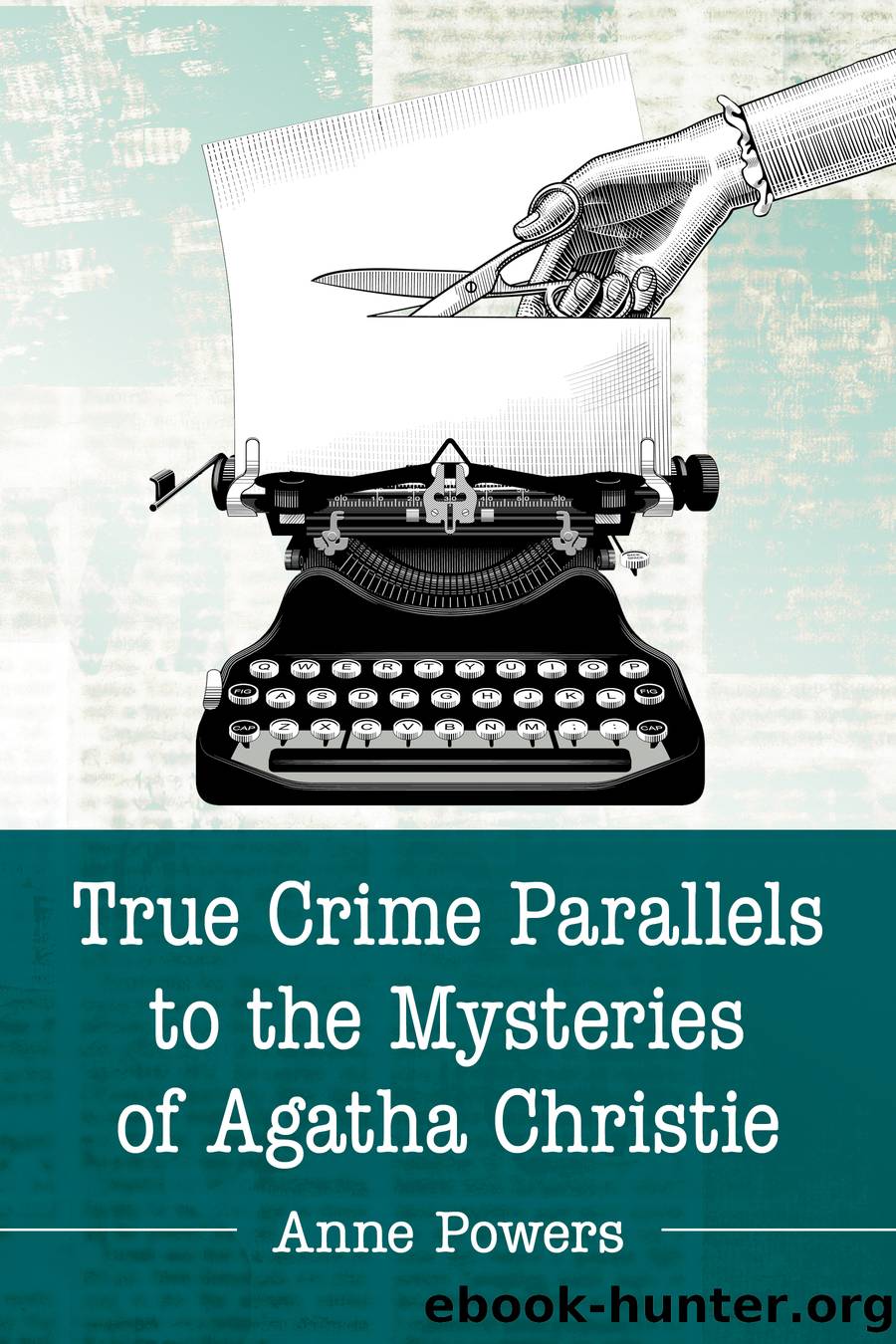True Crime Parallels to the Mysteries of Agatha Christie by Anne Powers

Author:Anne Powers
Language: eng
Format: epub
Publisher: McFarland & Company, Inc., Publishers
Published: 2020-02-22T00:00:00+00:00
âThe Lernean Hydraâ
Charles Oldfield had lost his wife to a chronic disease a year earlier. She had been older than he, and the rich partner in the marriage. Her customarily irritable behavior and habit of life had been exacerbated by long martyrdom to painful battles against the gastric disease that had finally killed her. But immediately after his wifeâs death, a whispering campaign sprang up against Dr. Oldfield in his home town, the village of Market Loughborough; a campaign that seemed to intensify rather than abate as time passed. The physician fears that the frustratingly nebulous menace was about to explode into Âfull-blown, open accusations to the authorities: accusations that he poisoned his wife for her moneyâand in order to wed another, younger woman. In desperation, the doctor goes to Poirot for help.
Gossip continues rife, and the hagridden Oldfield expects at any minute that the police will arrive at his door to charge him with murder. Poirot senses that the doctor is holding something back, and rightly surmises that there is another woman involved in the case. âThe village gossip,â he tells Oldfield, âit is based always, always on the relations of the sexesâ¦. It is because [the villagers] are convinced that the murder has been committed in order that the man may marry another woman that the talk grows and spreadsâ (Christie, âLerneanâ 43). With evident reluctance Oldfield feels forced to reveal to Poirot a detail of his personal life that he would clearly have preferred to keep to himself: he is in love with his dispenser, Jean Moncrieffe, and the most damaging brunt of the gossip spitefully couples her name with his. Jean reciprocates the doctorâs affections, but the hate campaign has forced them to a bitter acknowledgment: they dare not go ahead with plans to wed, lest the marriage give their enemies an opening for jeopardizing their happinessâand their lives.
Poirot senses two significant points in the situation the doctor describes to him: an opportunity to perform one of the âtwelve Labors of Herculesâ that he has set for himselfâand a real and purposeful malevolence toward Dr. Oldfield behind the crusade of rumors against him. Someone was deliberately and relentlessly trying not only to destroy the unfortunate doctorâs happiness, but the doctor himself as well.
Poirot accepts the troubling case. Like the terrifying, Âmany-headed Hydra of Lake Lerna that Heracles (Roman equivalent Hercules) of Greek myth was commanded to destroy, the Âmany-tongued monster of malicious gossip which Hercule Poirot had engaged himself to hunt down and demolish was nearly impossible to kill. The Hydra had been possessed of many heads; only one was the monsterâs master engine. To strike it off was the only way to slay the beast; cutting off any but that one vulnerable head would only spawn two more writhing and venomous replacements in its stead.
When Poirot travels to Dr. Oldfieldâs village to investigate, he finds a symbolically similar situation. The physicianâs hidden nemesis had artfully bred a network of venom with as many heads as the mythological Hydra.
Download
This site does not store any files on its server. We only index and link to content provided by other sites. Please contact the content providers to delete copyright contents if any and email us, we'll remove relevant links or contents immediately.
The Power of Myth by Joseph Campbell & Bill Moyers(1015)
Half Moon Bay by Jonathan Kellerman & Jesse Kellerman(958)
Inseparable by Emma Donoghue(941)
A Social History of the Media by Peter Burke & Peter Burke(940)
The Nets of Modernism: Henry James, Virginia Woolf, James Joyce, and Sigmund Freud by Maud Ellmann(837)
The Spike by Mark Humphries;(771)
The Complete Correspondence 1928-1940 by Theodor W. Adorno & Walter Benjamin(753)
A Theory of Narrative Drawing by Simon Grennan(747)
Culture by Terry Eagleton(726)
Ideology by Eagleton Terry;(700)
Bodies from the Library 3 by Tony Medawar(683)
World Philology by(679)
Farnsworth's Classical English Rhetoric by Ward Farnsworth(676)
Game of Thrones and Philosophy by William Irwin(671)
High Albania by M. Edith Durham(660)
Adam Smith by Jonathan Conlin(650)
A Reader’s Companion to J. D. Salinger’s The Catcher in the Rye by Peter Beidler(649)
Comic Genius: Portraits of Funny People by(618)
Monkey King by Wu Cheng'en(613)
